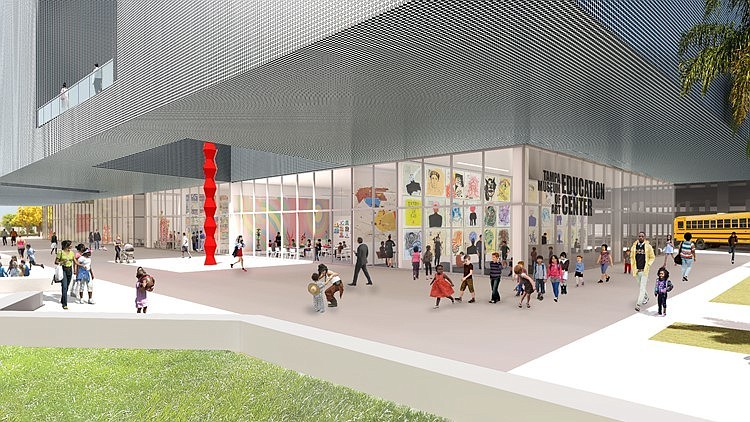- April 5, 2025
-
-
Loading

Loading

TAMPA — The Tampa Museum of Art has unveiled plans for a major renovation and expansion beginning this spring that will increase exhibition space, enhance existing educational facilities and allow for more hands-on experiences for visitors.
The improvements will be designed and directed by New York-based Weiss/Manfredi Architecture/Landscape/Urbanism, and construction will be overseen by general contractor Skanska USA’s Tampa operation. Weiss/Manfredi’s past projects include the Seattle Art Museum, the Women’s Memorial at Arlington National Cemetery; and the U.S. Embassy in New Delhi, India, according to a statement.
“It is fitting that we follow the museum’s centennial celebrations with efforts to ensure the museum can meet the needs of our community in the next 100 years,” says Tampa Museum of Art Foundation President and Campaign Committee Chair Jerry Divers, who also is chairman emeritus of the Bank of Tampa, in the statement.
The renovations will be fully funded by the museum’s board, its foundation and other donors and investors, the museum foundation notes in a statement. It did not specify how much the enhancements are projected to cost.
Michael Tomor, the Penny and Jeff Vinik executive director of the Tampa Museum, described the work as a “right-sizing” of the institution. Vinik is the owner of the Tampa Bay Lightning NHL hockey team and a joint venture partner in Strategic Property Partners, which is developing the $3 billion Water Street Tampa neighborhood in proximity to the Tampa Museum.
“With these improvements to our facility, the Tampa Museum of Art is poised to make a stronger impact than ever in the community and among fine arts institutions across the country,” says Dianne Jacob, the museum foundation’s board chair, in the release.
Construction is slated to begin in May and continue through June 2022. The museum does not anticipate closures or major disruptions as a result of the work.
The renovations include expanding the educational center to 10,000 square feet and adding a separate entrance to it; converting administrative and storage space to lecture rooms, artist workspaces and classrooms; adding a new docent lounge for staff; and upgrading exhibition gallery spaces to allow for multimedia presentations.
The museum was founded in 1920 and today contains one of the largest Greek and Roman antiquities collections in the Southeastern U.S. The museum is located next to Curtis Hixon Waterfront Park in downtown Tampa.